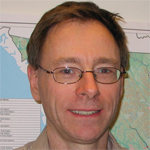At the 2016 ACR/ARHP Annual Meeting in Washington, D.C., in November, the ACR and the ARHP honored a group of distinguished individuals who have made significant contributions to rheumatology research, education and patient care. In the November 2016 issue, we reported on the ARHP’s awards. This month, we speak with the ACR winners.
Presidential Gold Medal
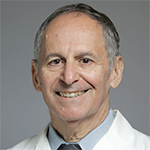 David Pisetsky, MD, PhD
David Pisetsky, MD, PhD
Professor of Medicine and Immunology, Duke University Medical Center, Durham, N.C.; Chief of Rheumatology, Durham Veterans Administration Medical Center
Background: A career focused on the pathogenesis of systemic lupus erythematosus (SLE) and the immunological properties of nuclear macromolecules in other diseases has been very rewarding for Dr. Pisetsky.
He received doctoral and medical degrees from the Albert Einstein College of Medicine in 1972 and 1973, served a clinical associate stint at the National Cancer Institute and from 1996–2007 was chief of rheumatology and immunology at Duke. He received the 2001 Howley Prize from the Arthritis Foundation for his work on the immune properties of DNA; served as the editor of Arthritis & Rheumatology and physician editor of The Rheumatologist; and is now the president of the U.S. Bone and Joint Initiative.
He reminds his colleagues that staying rooted in patient care is key to his success. “I’m still a clinician,” he says. “I value that part of my career greatly. I think it’s very important to anchor your science in clinical work, and I think it’s important to take your science to the clinical arena. That combination works very well for people like me who are MD/PhDs and can live in two worlds.”
Q: You’ve seen a dramatic improvement in both science and treatment from your days in immunology at the National Cancer Institute. How do you describe the leaps you’ve seen?
A: There are many struggles along the way, and many blind alleys in research. … At a certain point in time, however, you realize there has been extraordinary change. One dramatic example that’s regularly cited concerns antibody sequencing, which is key to understanding a disease like lupus, which is associated with autoantibodies. The first antibody that was fully sequenced was done with old-fashioned protein technology and was slow and laborious. It took literally years to get one sequence, and that advance led to the Nobel Prize for Gerald Edelman. Now you can do tens to hundreds of sequences in a day.
Q: What leaps will the next 20, 30 years give us?
A: Hypotheses don’t have the same role in research as before because of the magnitude of the data that you deal with. There’s no simple way of looking at this amount of data to come out with a simple conclusion. It’s just different. I think important progress in research is going to be in the realm of bioinformatics and biostatistics, combining complicated data sets with each other. We’re learning that subtle changes in genes or exposures in the environment over time can have a big clinical impact on a patient, but detecting small changes will be very challenging, although very interesting.
Distinguished Clinical Investigator Award
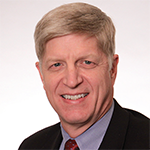 James O’Dell, MD
James O’Dell, MD
Stokes Distinguished Professor and Vice Chair of Internal Medicine and Chief of Rheumatology at the University of Nebraska Medical Center (UNMC) and the Omaha Veterans Affairs Hospital
Background: Dr. O’Dell’s 32-year career in rheumatology has been a veritable renaissance. “I’ve been privileged to live in kind of a Golden Age of rheumatoid arthritis (RA) clinical advances,” he says. “The prognosis for a patient with RA today is a whole world different than it was when I was a fellow in the early 1980s, and to see that and to see the impact that we can have on these patients’ lives has been humbling and a tremendous honor.”
The native Nebraskan received his medical degree and completed his residency and chief residency at the University of Nebraska in Omaha. He did a clinical and research fellowship in rheumatology at the University of Colorado in Denver in 1984.
He’s been at UNMC since, rising to vice chair of internal medicine and chief of rheumatology at both UNMC and the Omaha Veterans Affairs hospital.
Dr. O’Dell, a former ACR president, founded and has directed the Rheumatoid Arthritis Investigational Network (RAIN) for the past 26 years.
Q: What has RAIN meant to you over the course of your career?
A: In the mid-’90s, in particular—but even before that time—we perceived that there was going to be a need to ask questions that were really important for patients and for the clinicians taking care of them, rather than to get a product to market. That’s what RAIN has tried to do through the years: [ask] questions that are important to patients with rheumatoid arthritis and to clinicians, … and we’ve been very fortunate through the years to be able to do some studies that we believe have made a difference in the way clinicians care for rheumatoid arthritis [patients] around the world.
Q: You say you’ve practiced in a Golden Age of treatment options. What’s the next Golden Age going to bring?
A: What I hope [for] in the next 25 years [is that] we have ways to really personalize the choices of our medications, that we find factors that allow us to predict in a differential fashion who is going to respond to what therapy. And even if we have no new therapies, if we had an answer to that question, we would be a long ways forward from where we are, where we essentially continue to do trial and error, finding the right medication or the right combinations of medications to work for our patients.
Distinguished Clinician Scholar Award
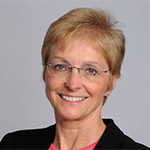 Claire Bombardier, MD
Claire Bombardier, MD
Professor of Medicine, University of Toronto; Senior Scientist, Toronto General Hospital Research Institute, University Health Network; Rheumatologist, Mount Sinai Hospital, Toronto, Ontario, Canada
Background: When Dr. Bombardier, a Montreal native, was younger, she was interested in physics, chemistry and mathematics, but her father is a pediatrician, and she heard medicine calling. Dr. Bombardier completed her medical degree at the University of Montreal and her residency at McGill University in Montreal. She was a Robert Wood Johnson Clinical Scholar in economics and rheumatology at Stanford University in Palo Alto, Calif. And she spent 13 years as rheumatology division director at the University of Toronto before switching positions earlier this year.
Still, her background in physics, math and economics informs her work to this day. “Sometimes, progress occurs when you merge knowledge from different disciplines.”
Q: How important is it to focus on best practices and evidence moving forward?
A: Medicine is a mixture of art, tradition and science. It’s very important to keep the art and the experience in it, because not everything can be quantified in medicine, and there is a lot of intuition and understanding of human nature that has to be there. But we must make sure that what we do has evidence, that the treatments we do are safe, the treatments we do are effective and the treatments we use have sustained effectiveness.
Q: What is the biggest change you’d like to see in terms of changing the practice based on evidence?
A: There’s a revolution in the availability of actual data in everyday practice because of the introduction of electronic health records, and there is also an evolution toward big data—whether it’s from the patient, the rheumatologist, mortality registries, birth registries, cancer registries, now they are even looking at Google data. People and pharmacies are buying what kind of drugs? Does that mean there’s an epidemic of flu coming in? We need to start looking at research in a completely new way.
Henry Kunkel Young Investigator Award
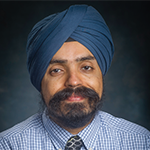 Jasvinder Singh, MBBS, MPH
Jasvinder Singh, MBBS, MPH
Professor of Medicine and Epidemiology, Staff Physician, Birmingham VA Medical Center; Director, UAB Cochrane Musculoskeletal Group Satellite Center; Director, Gout Clinic, University of Alabama Health Services Foundation; Associate Director, Gout and Hyperuricemia Center for Research and Translation (CoRT), University of Alabama at Birmingham, Birmingham, Ala.
Background: Dr. Singh has dedicated the bulk of his research career to gout, which he is quick to note is the most common inflammatory arthritis in adults, more common than RA. But he wants people to know more research is always needed.
Dr. Singh received his medical training at the University College of Medical Sciences in Delhi, India, and later completed a three-year research fellowship in rheumatology at Barnes Jewish Hospital and Washington University at St. Louis. His research foci have included evidence-based medicine, patient outcomes in gout and total joint replacement. He led the team that developed the 2012 and 2015 ACR Rheumatoid Arthritis Treatment Guidelines and led an international team to publish the first Cochrane overview and the first two Cochrane network meta-analyses in the Cochrane library comparing the efficacy and harms of biologics in RA and other conditions that provided indirect comparisons of biologics in the absence of head-to-head trial data, examples of evidence-based medicine and comparative effectiveness in RA.
Q: You’ve seen the practice of medicine in India, upstate New York and Alabama. How are those worlds different?
A: In most ways the same, in some ways different. The pain, the suffering in someone who is untreated, not yet diagnosed, is the same, worldwide. The smiles you can put on faces when you help patients is also the same. The gratitude, the hugs, the thank you notes still bring out the same emotions and mist in the eye. What’s different in India vs. New York and Alabama? In India, the patient [to] physician ratio is very high, resources are much more limited, the government provides free or subsidized medical care to a large population in a dual public-private system like in the U.K., and infectious diseases still constitute a major burden among rheumatic conditions and other medical conditions.
Q: What do you see as the future of evidence-based medicine?
A: I think personalized medicine is the next frontier. Physicians and patients are increasingly adopting evidence-based medicine into practice to help and guide them to choose the most effective option individualized for the patient given his or her comorbidities and potential risk factors for side effects. In the future, we will likely develop tools to take the existing knowledge on a population or patient level from trials and other studies, and plug in the information in real time to help us select the most beneficial therapy, with minimal risk, individualized for each patient.
Henry Kunkel Young Investigator Award
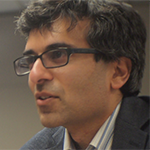 Soumya Raychaudhuri, MD, PhD
Soumya Raychaudhuri, MD, PhD
Associate Professor of Medicine, Harvard Medical School, Boston; Associate Physician, Brigham and Women’s Hospital, Boston
Background: Dr. Raychaudhuri is part of the next generation of rheumatologists, one that melds technology and clinical care. Just look at his CV: He received two bachelor’s degrees, in mathematics and biophysics, from the State University of New York at Buffalo in 1993. He received a doctorate in biomedical informatics in 2003 from Stanford University in Palo Alto, Calif., and then, in 2004, his medical degree from Stanford.
Dr. Raychaudhuri completed his internship and residency in internal medicine at the Brigham and Women’s Hospital. He is now an associate professor at Harvard Medical School, where he runs a computational genomics laboratory and serves as an attending physician at Brigham and Women’s Hospital. He also serves as an associate member of the Eli and Edythe L. Broad Institute of Massachusetts Institute of Technology and Harvard; a professor in genetics at the University of Manchester (U.K.); and a foreign adjunct professor at Sweden’s Karolinska Institutet.
Q: What does this award mean to you?
A: It means a lot to me that the community is recognizing the value of all the work we’ve done over the last several years trying to understand the genetics of rheumatoid arthritis and rheumatic diseases. The work has been really important to me because I feel like genetics and genomics in rheumatic diseases really offer some very interesting and informative avenues that will ultimately lead to novel therapeutics and, hopefully, to better outcomes for our patients. … In the world of science, there’s always a little bit of pressure. Science is always competitive, and of course, it’s incredibly nice to be recognized and to get an award for your work, but ultimately the best part of science is doing science.
Q: What do you enjoy more, computational science or clinical care?
A: I like both of them for their own sakes. I think I could be very happy in my life as a computational scientist. I could also be very happy in my life as a clinician. Clinical medicine, the human aspect of patient interaction and the intuition that goes behind medical decision making, is what I really like. On the computational side, it’s the exactness and cleanness of the data, the ability to develop novel sophisticated analytical tools to interpret the data, that’s what appeals to me. I feel very fortunate that I happen to have a career where I can have both at the same time.
Distinguished Basic Investigator Award
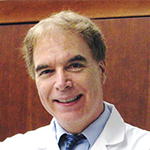 John Mountz, MD, PhD
John Mountz, MD, PhD
Professor of Medicine, University of Alabama at Birmingham (UAB)
Background: Rheumatologists are a smart bunch, to be sure, and Dr. Mountz could have been a nuclear physicist, literally. However, his early interest (which went as far as master’s and doctorate’s degrees in nuclear physics from Michigan State University in East Lansing, Mich.) in the field waned. Instead, he embarked on a career as a groundbreaking scientist in rheumatology.
Dr. Mountz’s pioneering work includes being one of the first investigators to link the expression of certain oncogenes with autoimmunity; being the first investigator to use T cell-receptor transgenic mice to address the role of defective T cell tolerance in autoimmunity; being a major contributor to our understanding of the roles of apoptosis and autoimmunity; and using a multigenetic BXD2 mouse model in autoimmune disease to provide the first evidence that increased activation-induced cytidine deaminase promotes development of pathogenic autoantibodies and that IL-17 promotes autoreactive germinal centers by direct migratory effects on B cells.
And if that’s not enough, Dr. Mountz was chosen in 2002 as one of 50 Arthritis Foundation Heroes who contribute outstandingly to rheumatology. Since 2003, he has been UAB’s J.W. & Virginia Goodwin-Warren D. Blackburn Jr. Research Chair in Rheumatology.
Q: You’ve been the first to do many things. What do you attribute that to?
A: I think everything is possible. I try to visualize individual components of complicated systems, such as the immune system, working together, and then I can usually envision what might be the underlying principal or mechanism that would explain an abnormal function. Even if I’m wrong, this gives me a direction to learn from as more experiments are done. This is exactly what I wanted to do when I got out of physics.
Also, I learned from some of the greatest visionaries in rheumatology, such as Alfred D. Steinberg, MD, at the NIH and William J. Koopman, MD, at UAB. They gave me the insights, confidence and freedom to pursue my dream of making innovative contributions to rheumatic disease research.
Q: How important is the first thing you just said: “I believe anything is possible?”
A: When I see an experimental problem that has not been solved, I think, ‘I can do that.’ I think it’s important to have a positive attitude and begin new experimental directions with the confidence that this will work, and we will learn something new and important. If not the first time, eventually it will work and become possible.
Distinguished Fellowship Program Director Award
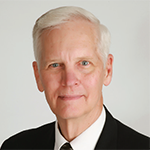 Sterling West, MD, MACP, MACR
Sterling West, MD, MACP, MACR
Professor of Medicine, University of Colorado School of Medicine, Aurora
Background: Educated at West Point, Dr. West spent nearly a quarter century in the U.S. Army, serving in various roles, including chief of rheumatology and fellowship program director at Fitzsimons Army Medical Center. A former adviser to the Army Surgeon General, he says he still leans on the lessons he learned in efficiency and organization.
Dr. West considers training the “future of our subspecialty,” the most fulfilling part of his 35-year career in education, spanning more than 50 fellows (including eight ACR Distinguished Fellow Award recipients). A past member of the ACR Fellowship Training Committee, he helped develop the first core curriculum, as well as the goals and objectives for the ABIM core competencies for rheumatology fellowships. He is a former member of the ABIM Rheumatology Certifying Exam Committee, a past deputy editor of Arthritis & Rheumatology and an editor of the book, Rheumatology Secrets.
He says he learns something new every day from a trainee, colleague or patient, and appreciates the ACR’s leadership and “vision for the future of rheumatology.”
Q: What is the value of mentoring?
A: Mentorship is critical to the future success of any physician, regardless of their medical specialty. My mentor taught me to set realistic goals and work hard to achieve them.
Q: If you could change one thing about the field of rheumatology, what would it be?
A: There [would be] better therapies for fibromyalgia.
Q: What are the biggest challenges fellowship training faces over the next decade?
A: There is going to be an increasing shortage of rheumatologists over the next decade. The biggest challenge in rheumatology fellowship training going forward will be similar to the challenge over the previous decade: to inspire the best and brightest residents to go into rheumatology.
Q: What advice do you have for the next generation of rheumatologists?
A: Try to ignore the negativism that is pervasive in medicine today. Keep in mind why you went into rheumatology. Our understanding of the inflammatory rheumatic diseases and the therapies we can offer our patients have increased dramatically over the past generation and will be even better in the future.
Distinguished Service Award
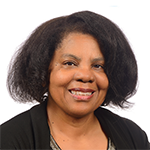 Yvonne Sherrer, MD, FACR
Yvonne Sherrer, MD, FACR
Center for Rheumatology, Immunology and Arthritis, Fort Lauderdale, Fla.
Background: When notified of her award, Dr. Sherrer said she was “flabbergasted” and “speechless. It makes me feel so appreciated that people have seen and taken note of what I have done, which I have always done for my patients and fellow physicians,” says Dr. Sherrer, a former ACR board member, past member of the FDA Advisory Committee for Arthritis, and the current president of the Florida Society of Rheumatology. “It is very humbling.”
She graduated from the University of Pittsburgh School of Medicine, and completed her residency and fellowship in Allergy, Immunology and Rheumatology at Stanford University. She served as chair of the Department of Rheumatology at Cleveland Clinic Florida, and for the past 20 years has operated a private practice and clinical trial center. She has served as principal investigator on more than 200 clinical trials.
Q: What is the most challenging part of your job these days?
A: Undoubtedly, all of the new things coming into play the last few years. We are getting paid less for what we do. What we have to do takes more time. A recent survey showed that for every hour of clinical work, there were two hours of unpaid, administrative work. That has been very frustrating. As physicians, we never expected these difficulties.
Q: What is the most fulfilling part of your job?
A: You get to know your patients. In fact, they call you their friend. They invite you to their special events, the 50th wedding anniversaries. Over time, you become close to them.
Q: What advice do you give your fellows?
A: Take a good history and physical exam. Sometimes, there is an overemphasis on technology. Technology is wonderful, in its place, but it also can mislead or send you down a wrong path. I emphasize to them that you have to put the whole picture together, which starts with a thorough history and physical exam. … Once that is done, then they do the critical thinking to put it all together.
Paulding Phelps Award
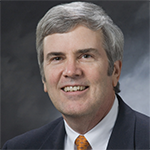 Thomas Pressly III, MD
Thomas Pressly III, MD
Rheumatologist, Willis-Knighton Medical Center, Shriners Hospital for Children, Shreveport, La.
Background: Dr. Pressly is a successful adult rheumatologist, but working with children with rheumatic diseases has been a calling for him. A longtime volunteer with Shriners, he and his wife, Tracy, established a nonprofit organization, Children and Arthritis, and its summer camp, the Jambalaya Jubilee. For more than 25 years, pediatric rheumatologists from all over the country have volunteered to “educate and encourage” children with rheumatic disorders and their families through the weekend camp in Shreveport.
“We’ve had tremendous community and physician support through the years for the Jambalaya Jubilee,” Dr. Pressly says. The idea was spawned by his wife’s success in dealing with juvenile diabetes mellitus through her participation in a diabetic camp as a child, which enabled her to accept and manage the disorder.
As a fellow, Dr. Pressly was mentored by Jim Cassidy, MD, and marveled at Dr. Cassidy’s work in pediatric rheumatology. Following his fellowship, Dr. Pressly moved to Northwest Louisiana, an area of the country that he found was underserved for children with arthritis. In an effort to bring awareness and support families with pediatric rheumatic disorders, the Presslys founded Children and Arthritis. One of the highlights of Dr. Pressly’s career was when his mentor, Dr. Cassidy, participated in and supported the Jambalaya Jubilee.
Q: As a solo practitioner, do you ever feel overwhelmed by everything going on in healthcare today?
A: While we are often reminded of the negative issues that are going on in healthcare today, there are numerous positive advances. … I am in awe of the improvements in the treatment of arthritis. We have several former campers from the early 1990s who are now in their late 20s and in wheelchairs due to the destruction and severity of the arthritis. Now, most children with these disorders have a much-improved prognosis, with manageable disease and even remission. It’s just remarkable. Through research and the advancement of immune modulators, we are able to do a much better job as rheumatologists. [We can] enable the majority of these young patients to eventually enter the workforce and to have a productive life. I’m pleased to be able to look back and see all the advancements since my fellowship days and using gold injections.
Q: What can rheumatology, as a field, with respect to access issues, do to increase the number of pediatric rheumatologists in America?
A: Clinicians with some training in pediatric rheumatology can help bridge the gap during this period of shortage. Adult rheumatologists can be used as screeners and can care for the less-intense cases and refer the more complicated cases to university centers. That has worked out pretty well in Northwest Louisiana.
Excellence in Investigative Mentoring Award
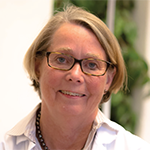 Ingrid Lundberg, MD
Ingrid Lundberg, MD
Department of Medicine, Solna, Karolinska Institutet, Karolinska University Hospital, Stockholm, Sweden
Background: So much for doctor’s orders. A disobedient patient—one who was told to rest and instead exercised—launched Dr. Lundberg’s career investigating myositis. “When I started, I was told myositis patients should not do any exercise. They were to rest only,” she says. “A patient of mine rejected this line of thinking. He told me that he started to exercise and, with medication, was feeling much better. He even showed me how many pushups he could do.”
That single office visit sparked Dr. Lundberg’s interest in muscle inflammation. She spent a post-doctorate year at the neuromuscular lab at Mayo Clinic in Rochester, Minn. Upon her return to Sweden, she established a myositis clinic at Karolinska. She was named professor in 2003, and since 2012 has chaired the rheumatology unit.
She has been an active and longtime ACR member, serving as associate editor of Arthritis & Rheumatology and contributing in various ways to the Annual Meeting. She is active in European and Swedish organizations, and in 2015 chaired the first International Conference on Myositis. “The international community that we collaborate with—it is very stimulating. You make friends and increase your knowledge and stimulate your daily work.”
Q: What is the value of mentorship?
A: Being a mentor, you learn so much from your students—from their backgrounds and their questions and their thoughts. I think that is really rewarding. Mentoring is a lot of discussion, attitude, how to solve problems, how to deal with patients, how to deal with grants that are turned down or papers that are rejected. It is the human contact that is valuable.
Q: You advocate for women in medicine/research. Why is that near and dear to your heart?
A: I think we need both men and women in healthcare research. We contribute different ideas and goals and expertise. There are more obstacles for women, to combine career and family, but I think it is very important that we really support women, to be able to stay in their career and still have a family life. Otherwise, we miss a lot of good people and good ideas.
Excellence in Investigative Mentoring
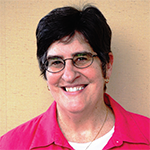 Marian Hannan, DSc, MPH
Marian Hannan, DSc, MPH
Professor of Medicine, Harvard Medical School, Boston; Co-Director, Musculoskeletal Research Center, Institute for Aging Research, Hebrew SeniorLife
Background: In six years as editor-in-chief of Arthritis Care & Research, Dr. Hannan has been in the unique position to have a sneak peek at the bolus of good work being done in the field of rheumatology. She says she has watched the field grow in ways that “really, really help our patients.”
“When I look at articles that were published six years ago, they were incredibly helpful. And when I review articles that we are putting together, now, for the next table of contents, they also have information that is more than just incrementally better for patients. There is a lot of information that builds across time,” Dr. Hannan says. “It is exciting, and, I am, on a weekly basis, being educated in a way that is fun and informative and makes the world a better place.”
An epidemiologist who directs the frailty course at Harvard School of Public Health, she mentors local graduate and medical students, and 8–10 trainees nationally via the Young Investigator program of the U.S. Bone & Joint Initiative. Her research has spanned various aspects of rheumatic disease, with a keen interest in the effect of biomechanics upon physical function and the influence of body composition.
Q: You are a big advocate of a multidisciplinary approach to research. Why so?
A: I think all comers should get to have a say on the path that an investigation is going. … The nice thing about the multidisciplinary aspect is that I am constantly learning from people from all levels of their career and my career, too. It provides a lot of enthusiasm and different ways of looking at things.
Q: You say funding is a ‘double-edged sword.’ Why so?
A: Not only do I feel the tightness of funding for my own scientific work, but I also see a number of younger people, people I have mentored coming up, not be able to maintain or attain a level of funding that will allow them to be a scientist. So they are not pursuing scientific endeavors, but looking to other careers, non-scientific careers. We lose those people who are fabulous scientists for tomorrow. I have strong hopes they will come back as the economy recovers and funding grows. That is the most challenging part right now.
Richard Quinn is a freelance writer in New Jersey.


